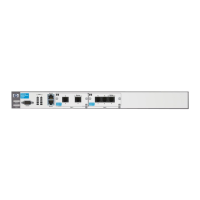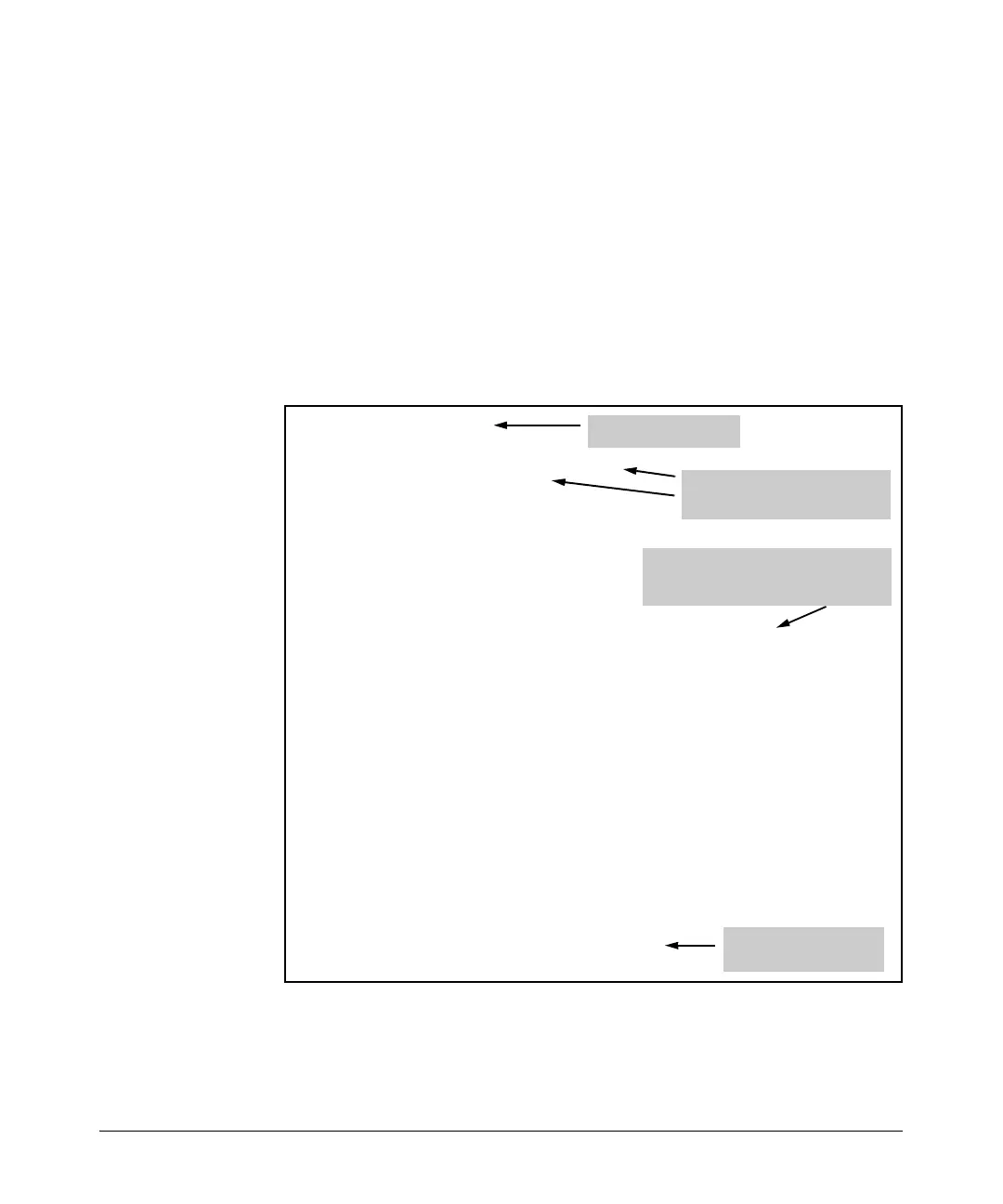4-28
Configuring E1 and T1 Interfaces
Viewing Information about E1 and T1 Interfaces
show interfaces Command
You can use the show interfaces <interface> <slot>/<port> command to
view detailed information about the status of the E1 or T1 interface. For
example, if you want to view the status of the E1 1/1 interface, enter the
following command from the enable mode context:
ProCurve# show interfaces e1 1/1
Figure 4-7 shows the results of this command for an E1 interface. In this
example, the E1 interface has been configured, but the Data Link Layer
protocol has not.
Figure 4-7. show interface E1
e1 1/1 is UP
Receiver has no alarms
E1 coding is HDB3, framing is E1
Clock source is internal
No network loopbacks
Last clearing of counters never
loss of frame : 1, last occurred 00:01:55
loss of signal : 0
AIS alarm : 0
Remote alarm : 0
Timeslot Status: 01234567890123456789012345678901
F-------------------------------
Status Legend: '-' = Timeslot is unallocated
'N' = Timeslot is dedicated (nailed)
'F' = Timeslot is dedicated for framing
Line Status: -- No Alarms --
5 minute input rate 0 bits/sec, 0 packets/sec
5 minute output rate 0 bits/sec, 0 packets/sec
Current Performance Statistics:
8 Errored Seconds, 0 Bursty Errored Seconds
0 Severely Errored Seconds, 2 Severely Errored Frame Seconds
0 Unavailable Seconds, 0 Path Code Violations
0 Line Code Violations, 8 Controlled Slip Seconds
0 Line Errored Seconds, 0 Degraded Minutes
TDM group 1, line protocol is not set
Encapsulation is not set
Physical Layer is up
No Data Link Layer
protocol is configured.
Channel assignments are not
displayed correctly until the Data Link
Layer protocol is configured.
Settings for line coding, frame
format, and clock source

